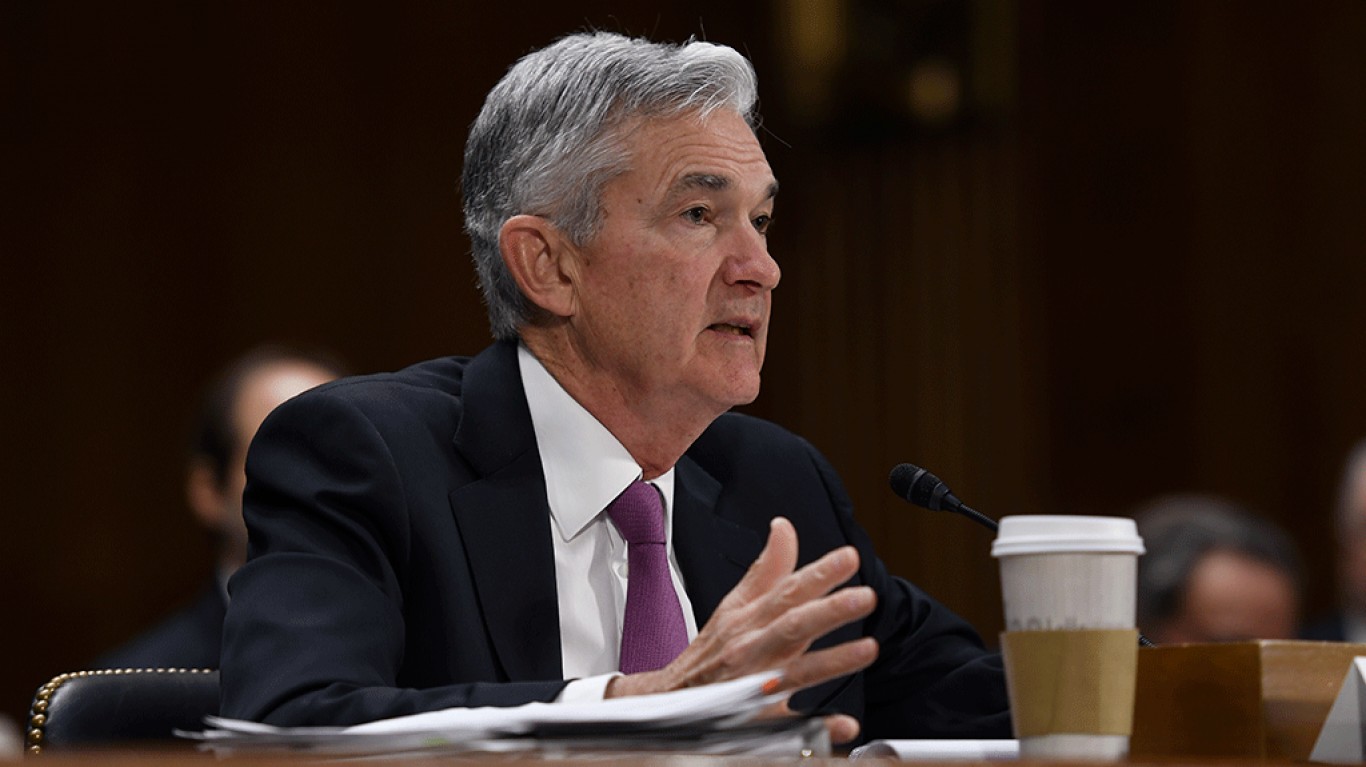Investing
Stocks Celebrate Fed's Jumbo Rate Cut, but Disaster Could Be Lurking

Published:

The Federal Reserve finally acted and the markets are rejoicing.
Following an unprecedented series of 11 interest rate hikes between March 2022 and July 2023 that took the Federal Funds Rate from 0% to 5%, and then left it there under a “higher for longer” policy to slow the economy’s growth, the central bank cut rates by half of a percentage point.
Stocks soared in response. The Dow Jones Industrial Average is up 650 points in afternoon trading, a 1.5% rise, while the S&P 500 surged 2% higher with a 115-point gain. It was high-fives and champagne toasts all over Wall Street.
Yet investors should be more circumspect. Not all may be as it seems. For as much as markets were hoping for rate cuts between 0.25% and 0.5%, a half-point cut at the outset is pretty rare. In fact, global capital markets commentary site The Kobeissi Letter says it has only happened three times in recent memory and the last two times led to a market crash: the dot-com crash of 2001 and the financial markets collapse in 2007.
Since Fed chair Jerome Powell maintains “the U.S. economy is in good shape” and the labor market is “solid,” it asks why is the central bank acting like the bottom is about to fall out?
The market commentary site acknowledges current economic conditions are different than the previous times the Fed cut rates so aggressively, but it also says a soft landing for the economy would be an historic first. Trying to get inflation to 2% and unemployment to stay around 4% is a delicate balancing act. Investors should proceed with caution despite Wall Street’s euphoria.

Yet stocks were savoring the rate cuts. The big winner so far amongst Dow stocks are heavy equipment manufacturer Caterpillar (NYSE:CAT) and customer relationship management software provider Salesforce (NYSE:CRM). Both stocks were up more than 5% heading towards the market close.
Assuming Caterpillar ends the day up, it would mark the ninth consecutive day its shares have closed higher. The stock is up more than 13% over that time frame and it pushes it up over 26% year-to-date.
Salesforce has now almost regained all the ground lost after its first quarter earnings report in May when it lost 20% in a single day. Both its revenue and billings were below market expectations due to deals taking longer to complete and companies being more measured in the spending.

On the S&P 500, Darden Restaurants (NYSE:DRI) and Tesla (NASDAQ:TSLA) are the top gainers, each rising more than 7%.
While interest rate cuts no doubt are helping the owner of Olive Garden and LongHorn Steakhouse rise, the restaurant operator’s stock was already rising strongly after signing a deal with Uber Technologies (NYSE:UBER) to have its UberEats service begin delivering food for the Italian restaurant chain. It will start as a pilot program at a few Olive Garden restaurants later this year, then if successful, will spread to all 900 locations by May 2025. The stock has moved sharply off its July lows.
Electric car maker Tesla was also racing ahead as tech stocks generally rocketed higher. While TSLA stock has risen off recent lows, the stock is still down in 2024 and has lost more than 8% over the past year. Yet the automotive industry as a whole was pleased with the rate cuts with Ford (NYSE:F), General Motors (NYSE:GM), and Stellantis (NYSE:STLA) all rising.
The financing of new vehicles has become too expensive for car buyers and rate cuts could help lift industry sales.
Retirement planning doesn’t have to feel overwhelming. The key is finding expert guidance—and SmartAsset’s simple quiz makes it easier than ever for you to connect with a vetted financial advisor.
Here’s how it works:
Why wait? Start building the retirement you’ve always dreamed of. Click here to get started today!
Thank you for reading! Have some feedback for us?
Contact the 24/7 Wall St. editorial team.